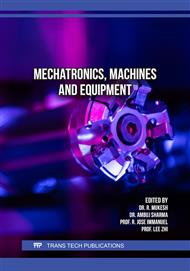p.27
p.39
p.51
p.61
p.71
p.87
p.101
p.113
p.125
Smart Automated Evaporator Coil Cleaning System for Ceiling-Mounted Air Conditioning Units
Abstract:
Ceiling cassette air-conditioning units play a pivotal role in the HVAC industry, renowned for their high efficiency, especially in high-rise buildings. However, the routine maintenance of these units poses significant challenges. The current methods are labor-intensive, time-consuming, and wasteful of water, leading to adverse effects on workers' health due to chemical exposure and the physical strain of manual cleaning. In response, this research proposes an innovative solution leveraging Arduino, high-pressure water nozzles, and electronic components to revolutionize maintenance procedures. By automating cleaning processes, this system aims to reduce both the time required for servicing and the physical exertion demanded from workers while also minimizing water wastage and eliminating exposure to harmful chemicals. This study comprehensively evaluates the effectiveness of this technological intervention against conventional methods, highlighting its potential to not only optimize maintenance efficiency but also enhance worker safety and well-being.
Info:
Periodical:
Pages:
71-86
Citation:
Online since:
April 2025
Authors:
Price:
Сopyright:
© 2025 Trans Tech Publications Ltd. All Rights Reserved
Share:
Citation:



